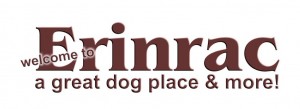I have been using WordPress ‘seriously’ for about twelve months; one of the great advantages of WordPress is the constant upgrades that are available, and that are really, really easy to install.
One of the most annoying things about WordPress’ need to upgrade is that plugins then can become outdated and non-functional, or even distort your posts and pages. Generally the plugin developer will address this, and then you have the option to upgrade the plugin too, and that is really easy as well.
But what happens when the plugin developer has moved on and no longer offers support? You have a bit of a mess to deal with (or ignore).
Many plugins and themes, and theme extensions, rely on ‘shortcodes’ which are a primitive idea and no doubt will evolve to a more user friendly format, after all WYSIWYG editing is the norm now.
Shortcodes will be absolutely fine if your extensions and plugins go on being upgraded, but they are going to cause some heartache if they are no longer supported, or the developer changes their pricing format and you decide not to use their new pricing structure and so receive further upgrades. The shortcodes won’t appear on the posts or pages, but neither will the formatting or insertions be as you expect!
So, having being subjected to one of my theme and extension companies deciding they could not continue with a one off fee and lifetime updates but still offering their products but at an annual fee of several hundred dollars, I had a bit of a think about the fabulous world of WordPress. I now avoid plugs even more, the usability is not guaranteed, and as so many people do advise, too many plugins increases the risks of site malfunction and so poking about to find the culprit plugins and deactivate them.
Most of my work on WordPress sites is articles, so now rather than relying on the snassy highlight boxes that I had been using courtesy of one of the Woothemes products, I now ‘hardcode’ the code into the post/page itself, it is only standard HTML/CSS coding that shortcodes use. The shortcode is in the website resources and when the browser finds this code it flips through, reads the extended version, and outputs the page/post.
So to achieve the following info box, I now type in (or cut & paste!) the Text tab in the WordPress Add New Post (or edit, or page)
<p style=”position: relative; padding: 15px; margin: 1em 0 3em; color: #800000; background: linear-gradient(#f9d835, #f3961c); /* default background for browsers without gradient support */ /* css3 */ background: -webkit-gradient(linear, 0 0, 0 100%, from(#f9d835), to(#f3961c)); -webkit-border-radius: 10px; -moz-border-radius: 10px; border-radius: 10px; text-align: center; margin-left: auto; margin-right: auto; width: 22em; font-size: 1.5em;”><strong>Hope Lane
<a href=”www.hopelaneart.com” target=”_blank”>www.hopelaneart.com</a>
<a href=”www.facebook.com/hopelaneportraits” target=”_blank”>www.facebook.com/hopelaneportraits</a>
<a href=”http://www.etsy.com/shop/HopeLaneArt” target=”_blank”>http://www.etsy.com/shop/HopeLaneArt</a></strong></p>
which gives
Hope Lane
www.hopelaneart.com
www.facebook.com/hopelaneportraits
http://www.etsy.com/shop/HopeLaneArt
And that should make your posts or pages future proof, even if you change theme or stop using the plugin or extension that gives an insert box or something like this.
The shortcode has only being using some CSS paragraph styling. You can easily play around the with above code to get the effect you like, or Google for CSS information boxes or the like for some more ideas. You do need to look for inline CSS code, many examples rely on the stylesheet which you can alter, but it isn’t really for an ordinary WordPress user.
btw, I am fairly sure the code from a CSS style sheet is just listed in a paragraph inline style, so if you can only find stylesheet code for what you want, pop it in between the <p style =” and “> add your text and close the p style with </p> in the Text tab and then pop back to Visual view to see.
